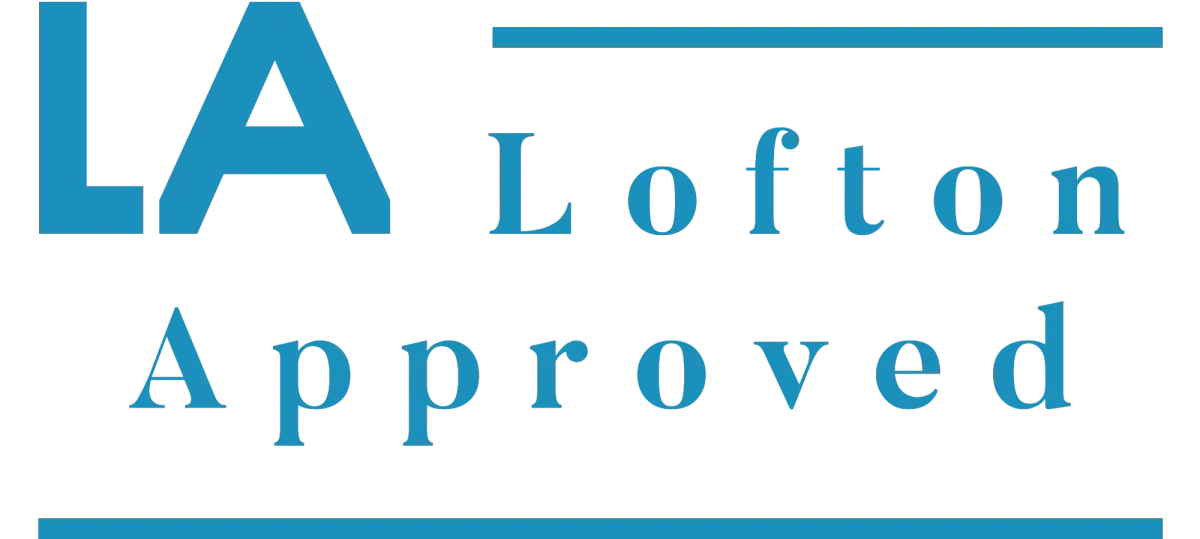Is Your Team Running You
Instead of With You?
Or Are You Still the Bottleneck in Your Own Business?
Can I be completely honest with you? When I was running corporate divisions, I thought being indispensable made me valuable. I was wrong. Being indispensable made me exhausted. Every decision had to go through me. Every problem needed my input. I wasn't leading a team—I was babysitting a business.

Is Your Team Running You
Instead of With You?

Or Are You Still the Bottleneck
in Your Own Business?
Can I be completely honest with you? When I was running corporate divisions, I thought being indispensable made me valuable. I was wrong. Being indispensable made me exhausted. Every decision had to go through me. Every problem needed my input. I wasn't leading a team - I was babysitting a business.
Are You Asking Yourself These Questions About Your Operations?
The Indispensable Trap
Why does everything fall apart when you're not there to manage it?
Because you've accidentally trained your team to depend on you for everything. They're not incompetent - they're operating in a system that punishes independent thinking and rewards learned helplessness.
The Decision Funnel
Why does every decision, big or small, seem to require your approval?
Because you never taught them what good decisions look like, only that they should ask you before making any. You've become the decision-maker instead of the decision-teacher.
The Quality Control Nightmare
Why is it impossible to maintain standards when you're not directly involved?
Because your standards live in your head, not in your systems. Your team is guessing what 'good enough' means instead of following clear protocols that define excellence.
The Growth Paradox
Why does growing your business feel like it's making your life more complicated?
Because you're scaling volume without scaling systems. More customers flowing through broken processes just means more problems for you to solve personally.
If these questions hit home, you're not running a business - you're running an expensive hobby that requires your constant supervision.
Are You Asking Yourself These Questions About Your Operations?
The Indispensable Trap
Why does everything fall apart
when you're not there to manage it?
Because you've accidentally trained your team to depend on you for everything. They're not incompetent - they're operating in a system that punishes independent thinking and rewards learned helplessness.
The Decision Funnel
Why does every decision, big or small, seem to require your approval?
Because you never taught them what good decisions look like, only that they should ask you before making any. You've become the decision-maker instead of the decision-teacher.
The Quality Control Nightmare
Why is it impossible to maintain standards when you're not directly involved?
Because your standards live in your head, not in your systems. Your team is guessing what 'good enough' means instead of following clear protocols that define excellence.
The Growth Paradox
Why does growing your business feel like it's making your life more complicated?
Because you're scaling volume without scaling systems. More customers flowing through broken processes just means more problems for you to solve personally.
If these questions hit home, you're not running a business - you're running an expensive hobby that requires your constant supervision.
How I Went from Micromanager to Strategic Leader (The Hard Way)

The Micromanagement Confession
Let me tell you about the day I realized I was the problem. I was managing a corporate division, and I got food poisoning—couldn't work for three days. When I came back, I expected chaos. Instead, everything had run perfectly without me.
My first thought wasn't relief. It was panic. If they could run things without me, what was my value? That's when I understood I had confused being busy with being important.
The Identity Crisis
I had to completely redefine what it meant to be a leader. I wasn't supposed to be the Solver of All Problems, the Maker of All Decisions, and the Keeper of All Standards. I was supposed to be the Builder of Systems, the Developer of People, and the Creator of Processes that worked without me.
The Systems Revolution
The transformation wasn't easy. I had to give up control to gain control. I had to stop solving problems and start building systems that prevented problems. I had to stop being the hero and start creating heroes.
Six months later, that division was running better than ever, my stress was lower than it had been in years, and I was finally doing the strategic work that actually moved the needle.
The Honest Admission
Here's what I wish someone had told me: being needed for everything isn't leadership - it's addiction. And like any addiction, it's destroying the thing you think you're helping.
How I Went from Micromanager to Strategic Leader
(The Hard Way)

The Micromanagement Confession
Let me tell you about the day I realized I was the problem. I was managing a corporate division, and I got food poisoning—couldn't work for three days. When I came back, I expected chaos. Instead, everything had run perfectly without me.
My first thought wasn't relief. It was panic. If they could run things without me, what was my value? That's when I understood I had confused being busy with being important.
The Identity Crisis
I had to completely redefine what it meant to be a leader. I wasn't supposed to be the Solver of All Problems, the Maker of All Decisions, and the Keeper of All Standards. I was supposed to be the Builder of Systems, the Developer of People, and the Creator of Processes that worked without me.
The Systems Revolution
The transformation wasn't easy. I had to give up control to gain control. I had to stop solving problems and start building systems that prevented problems. I had to stop being the hero and start creating heroes.
Six months later, that division was running better than ever, my stress was lower than it had been in years, and I was finally doing the strategic work that actually moved the needle.
The Honest Admission
Here's what I wish someone had told me: being needed for everything isn't leadership - it's addiction. And like any addiction, it's destroying the thing you think you're helping.
The Operations Freedom Framework: How We Build Teams That Run Themselves
Pillar 1: The Decision Distribution System
Teaching Your Team to Think Like Owners, Not Employees
What We Build: Decision trees, authority matrices, approval thresholds, escalation protocols, and judgment criteria that let your team act confidently within clear boundaries.
What We Build: Decision trees, authority matrices, approval thresholds, escalation protocols, and judgment criteria that let your team act confidently within clear boundaries.
Real Result: One client went from 47 'quick questions' per day to 3 strategic discussions per week by implementing clear decision-making guidelines.
Pillar 2: The Quality Consistency Engine
Building Standards That Work Whether You're Watching or Not
Consistent quality comes from systems, not supervision. We create quality protocols that are so clear and simple that excellent results become automatic.
System Components: Quality checklists, review processes, error prevention protocols, customer feedback loops, and continuous improvement cycles.
Client Example: Service company reduced customer complaints by 89% and improved satisfaction scores from 7.1 to 9.4 through systematic quality protocols.
Pillar 3: The Workflow Optimization Matrix
Eliminating Bottlenecks Before They Bottle You Up
Every business has hidden inefficiencies that waste time, money, and energy. We map your workflows to identify and eliminate bottlenecks, redundancies, and unnecessary handoffs.
Optimization Focus: Process mapping, bottleneck identification, workflow redesign, automation opportunities, and efficiency measurement.
Success Story: Manufacturing client increased throughput by 45% without adding staff by optimizing their production workflow and eliminating redundant processes.
Pillar 4: The Performance Visibility Dashboard
Knowing What's Really Happening Before Problems Become Crises
You can't manage what you can't see. We implement tracking systems that give you real-time visibility into performance, problems, and opportunities without micromanaging the details.
Dashboard Elements: Key performance indicators, early warning systems, trend analysis, exception reporting, and predictive metrics that keep you informed without keeping you involved in every detail.
Impact: Technology company reduced crisis management by 78% and improved proactive problem-solving by implementing comprehensive performance visibility systems.
The Operations Freedom Framework: How We Build Teams That Run Themselves
Pillar 1:
The Decision Distribution System
Teaching Your Team to Think
Like Owners, Not Employees
What We Build: Decision trees, authority matrices, approval thresholds, escalation protocols, and judgment criteria that let your team act confidently within clear boundaries.
What We Build: Decision trees, authority matrices, approval thresholds, escalation protocols, and judgment criteria that let your team act confidently within clear boundaries.
Real Result: One client went from 47 'quick questions' per day to 3 strategic discussions per week by implementing clear decision-making guidelines.
Pillar 2:
The Quality Consistency Engine
Building Standards That Work Whether You're Watching or Not
Consistent quality comes from systems, not supervision. We create quality protocols that are so clear and simple that excellent results become automatic.
System Components: Quality checklists, review processes, error prevention protocols, customer feedback loops, and continuous improvement cycles.
Client Example: Service company reduced customer complaints by 89% and improved satisfaction scores from 7.1 to 9.4 through systematic quality protocols.
Pillar 3:
The Workflow
Optimization Matrix
Eliminating Bottlenecks
Before They Bottle You Up
Every business has hidden inefficiencies that waste time, money, and energy. We map your workflows to identify and eliminate bottlenecks, redundancies, and unnecessary handoffs.
Optimization Focus: Process mapping, bottleneck identification, workflow redesign, automation opportunities, and efficiency measurement.
Success Story: Manufacturing client increased throughput by 45% without adding staff by optimizing their production workflow and eliminating redundant processes.
Pillar 4:
The Performance
Visibility Dashboard
Knowing What's Really Happening Before Problems Become Crises
You can't manage what you can't see. We implement tracking systems that give you real-time visibility into performance, problems, and opportunities without micromanaging the details.
Dashboard Elements: Key performance indicators, early warning systems, trend analysis, exception reporting, and predictive metrics that keep you informed without keeping you involved in every detail.
Impact: Technology company reduced crisis management by 78% and improved proactive problem-solving by implementing comprehensive performance visibility systems.
Why Operations Coaching Works When Management Consulting Doesn't
What Most Management Consultants Do
Analyze your current operations and create recommendations
Deliver beautifully designed process maps and org charts
Focus on efficiency improvements and cost reductions
Leave you to figure out implementation
Measure success by plan completion
What Lofton Approved Operations Coaching Does
Partner with you through complete implementation
Build systems that your team actually wants to use
Focus on creating operational independence from you
Stay until the new operations become "how we do things here"
Measure success by your freedom and business results
Here's the Truth:
Beautiful process maps sitting in a binder don't change anything. Real operations transformation happens when your team adopts new ways of working because they see the value, not because they were told to.
Why Operations Coaching Works When Management Consulting Doesn't
What Most Management Consultants Do
Analyze your current operations and create recommendations
Deliver beautifully designed process maps and org charts
Focus on efficiency improvements and cost reductions
Leave you to figure out implementation
Measure success by plan completion
What Lofton Approved
Operations Coaching Does
Partner with you through complete implementation
Build systems that your team actually wants to use
Focus on creating operational independence from you
Stay until the new operations become "how we do things here"
Measure success by your freedom and business results
Here's the Truth:
Beautiful process maps sitting in a binder don't change anything. Real operations transformation happens when your team adopts new ways of working because they see the value, not because they were told to.
You're Ready for
Operations Coaching If:
Signs You're Ready for
Growth Coaching
You're tired of being the answer to every question
You want your business to run without your constant oversight
You're willing to give up control to gain freedom
You have a team of at least 5-8 people
You're committed to systematic change, not quick fixes
You understand that transformation takes 6-12 months
Signs You Should Wait
You enjoy being needed for everything
You don't trust your team to make good decisions
You want quick fixes without systematic change
Your team is smaller than 5 people
You're not willing to invest in long-term transformation
Operations transformation requires you to change how you lead, not just how your team works. If you're not ready to stop being the hero of every story, this won't work. But if you're ready to build something that works without you, let's talk.
What It Costs to Buy Your Freedom Back
Let's talk about what you're really buying: your freedom. What's it worth to work 25 fewer hours per week? What's the value of taking a vacation without your phone ringing? What's it worth to have a business that grows without consuming your life?
Our operations clients typically reclaim 15-25 hours per week while improving business performance. If your time is worth $100/hour, that's $78,000-$130,000 in annual value - just from getting your time back.
40-60% reduction
in owner involvement in daily operations
25-50% improvement
in team decision-making autonomy
30-45% increase
in operational efficiency
50-80% reduction
in crisis management
What It Costs to
Buy Your Freedom Back
Let's talk about what you're really buying: your freedom. What's it worth to work 25 fewer hours per week? What's the value of taking a vacation without your phone ringing? What's it worth to have a business that grows without consuming your life?
Our operations clients typically reclaim 15-25 hours per week while improving business performance. If your time is worth $100/hour, that's $78,000-$130,000 in annual value—just from getting your time back.
40-60% reduction
in owner involvement in daily operations
25-50% improvement
in team decision-making autonomy
30-45% increase
in operational efficiency
50-80% reduction
in crisis management
Frequently Asked Questions
What is operations coaching and how does it help my business?
Operations coaching helps business owners build systems, processes, and teams that run smoothly without constant oversight. It turns day-to-day operations from chaos into streamlined workflows so you can focus on growth instead of putting out fires.
How do I know if my business is ready for operations coaching?
If you’re tired of answering every question, your team is at least 5–8 people, and you’re committed to long-term transformation instead of quick fixes, operations coaching is the right fit.
What kinds of problems does operations coaching solve?
Operations coaching addresses decision bottlenecks, inconsistent quality, inefficient workflows, and lack of performance visibility. It helps eliminate “being needed for everything” by creating systems that empower your team.
What results can I expect from operations coaching?
Clients often see fewer daily interruptions, faster workflows, stronger team accountability, improved customer satisfaction, and the ability to scale operations without burning out.
How long does it take to see results from operations coaching?
While some improvements show up in the first few weeks, most businesses see measurable changes in efficiency, quality, and team independence within 6–12 months of consistent implementation.
Does operations coaching work for all industries?
Yes. Operations coaching focuses on universal principles of decision-making, workflow optimization, and team accountability. Whether you run a service company, manufacturing business, healthcare practice, or retail operation, the systems are tailored to your context.
What’s the difference between operations coaching and traditional business consulting?
Unlike consultants who hand you a plan and walk away, operations coaching works alongside you and your team in real time to build systems, train decision-making, and ensure implementation actually happens.
How will operations coaching free up my time as a business owner?
By distributing decisions, implementing quality systems, and building team accountability, operations coaching helps you shift from working in the weeds to focusing on strategy and growth—reducing your daily involvement in routine issues.
Ready to Stop Being a Prisoner in Your Own Business?
You have two choices: keep being the answer to every question and the solution to every problem, or build operations that work without you.
One choice keeps you trapped. The other sets you free.
Which future do you want?
Complimentary Operations Freedom Assessment - discover what's keeping you trapped in your own business.
Ready to Stop Being a Prisoner in Your Own Business?
You have two choices: keep being the answer to every question and the solution to every problem, or build operations that work without you.
One choice keeps you trapped.
The other sets you free.
Which future do you want?
Complimentary Operations Freedom Assessment - discover what's keeping you trapped in your own business.
Coppyright 2025 | Privacy Policy | Terms & Conditions | Cookie Policy






